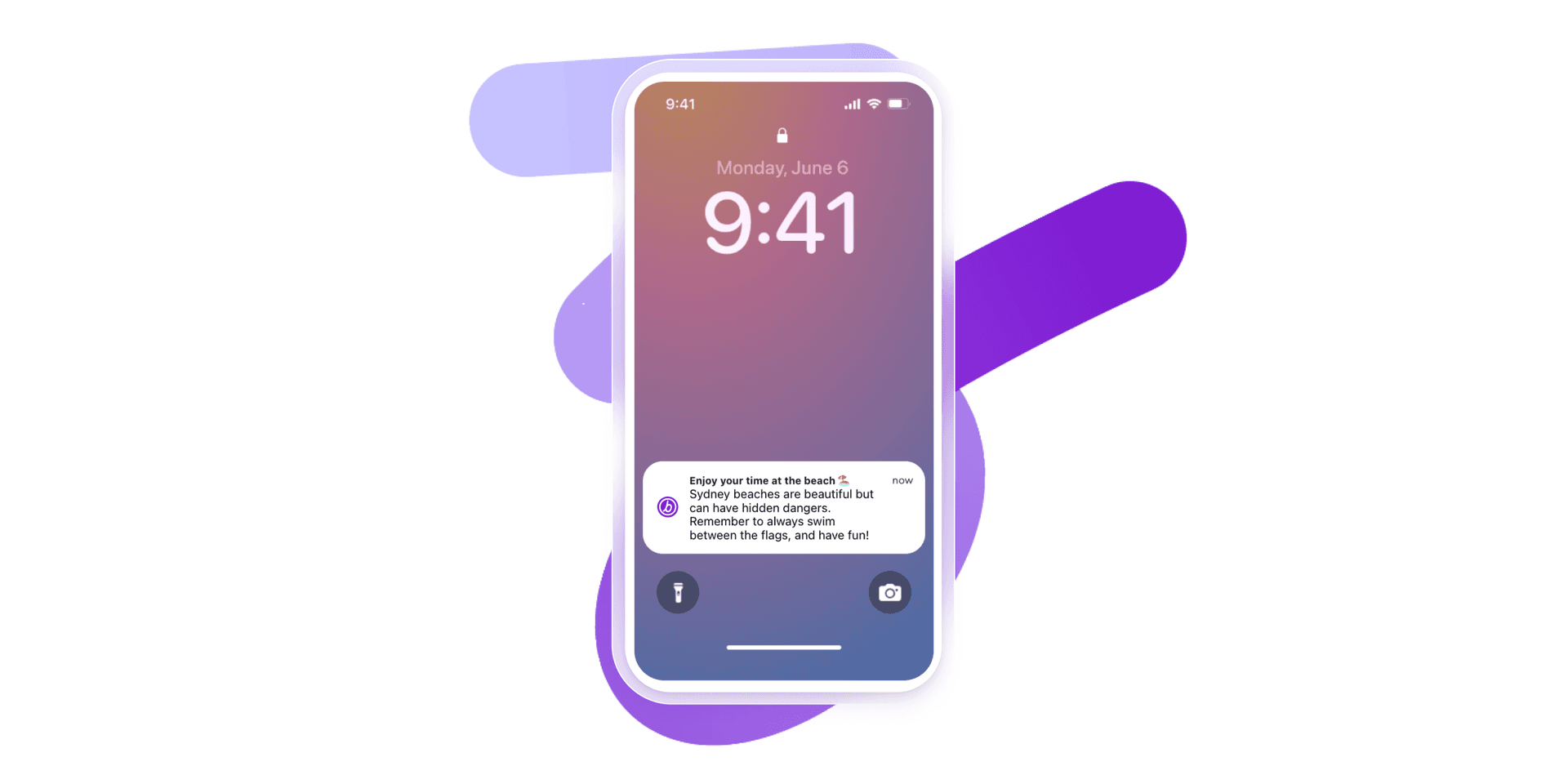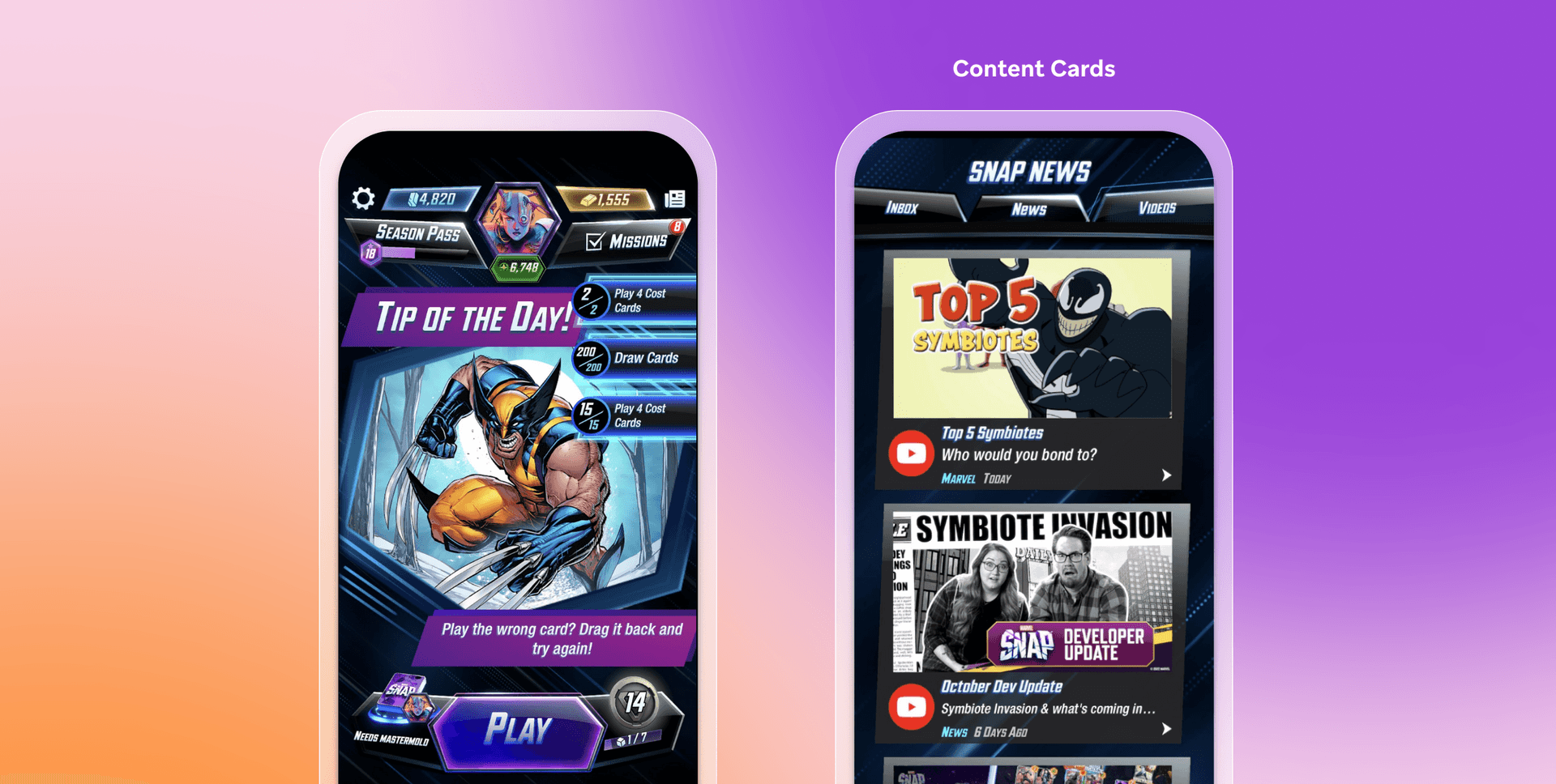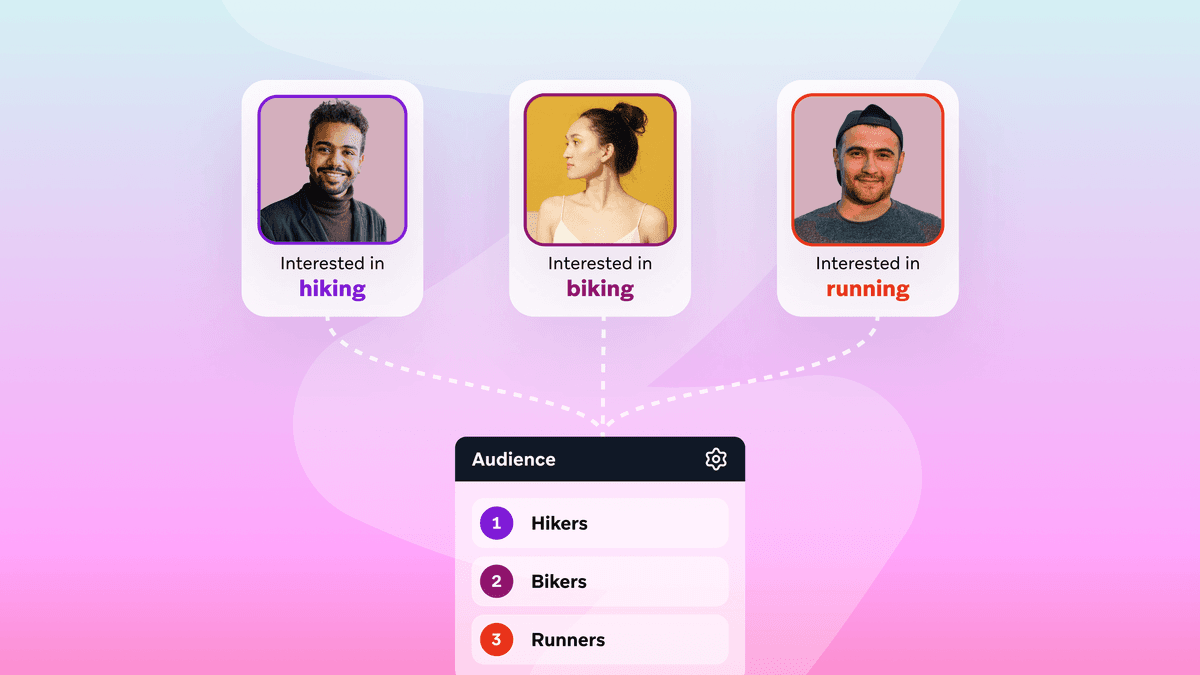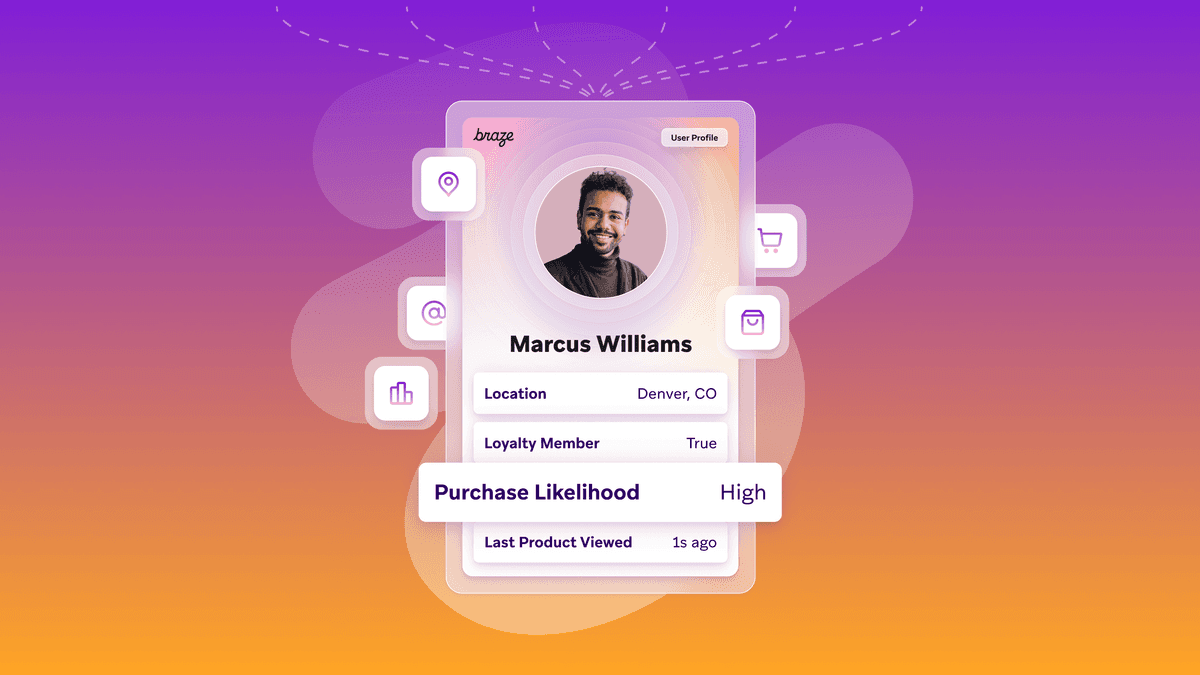Mobile Marketing: What It Is, Why It Matters, and What It Can Do for Your Business
Published on December 17, 2024/Last edited on December 17, 2024/9 min read


Team Braze
On average, Americans pick up their phones 80 times per day. That number has grown over the last decade—in 2015, the average number of pickups was 46 per day. In 2014, it was only 33 times per day.
As we become a mobile-first society, businesses understand mobile isn’t just where customers are browsing, but engaging. In the retail space, mobile analytics indicate that nearly half of all sales happen on mobile. With a seemingly endless supply of mobile content and media, consumers are now spending more time looking at phones and tablets than they do looking at TVs.
In today’s world, mobile marketing is how brands reach this highly active, highly attentive demographic.
What Is Mobile Marketing?
Mobile marketing involves using mobile devices to attract, engage, and retain audiences when they’re on their phones. And, as you learned earlier, that’s pretty much all day, every day.
In terms of finding and attracting audiences, mobile marketing involves spending ad dollars on third-party apps, websites, and search engines.
In terms of engaging and retaining audiences, organic mobile marketing involves growing your company’s “owned” channels or platforms. This includes things like:
1. Mobile app push notifications
2. Mobile web push notifications
5 Mobile Marketing Strategies Worth Stealing
1. Target mobile users of all ages.
Today, social media trends started by high schoolers can swing the commercial needle. But, to assume that mobile marketing campaigns should only be geared to millennials or Gen Z-ers would be a mistake. While young, digital natives are highly active on mobile, they’re hardly the only ones.
2. Go all in on data.
Knowing your audience age range is important. But that’s just one piece of the mobile marketing puzzle. Thanks to customer engagement platforms, you can now create detailed profiles for current and prospective customers based on their unique preferences, interests, and behaviors. What language do they speak? What time zone do they live in? What’s their favorite ice cream flavor? These are just a few of the nuanced data points that can help inform a smart mobile marketing strategy.
It’s also important to understand your customers’ behaviors. How many times have they abandoned shopping carts? How long did they engage with your content? When are they most likely to interact with push notifications? All of this data is measurable and retrievable. And knowing what to do with it can lead to awesome customer experiences.
3. Respect users’ privacy.
Personalization is a great way to appeal to mobile users on their terms, but this tactic also has its pitfalls. When personalization is overdone or feels invasive, it actually reduces a customer’s desire to interact with a brand. In fact, Braze found that 75% of adults stopped engaging with brands because of concerns over personal data. Customers want you to understand them, but only to a point.
When working with first-party data, be transparent with people about the data you’re collecting and how it’s being used. As a general rule, customers respond better if personalized experiences are based exclusively on information they’ve volunteered. It’s a balancing act, but getting it right can be the difference between your audience feeling seen—and feeling watched.
4. Make your mobile channels work together.
When we talk about cross-channel marketing, the term “mobile” is often used as a catch-all. But think of all the ways you interact with your mobile devices. Browsing, emailing, texting, using apps—each action requires its only unique strategy. And those nuances should be accounted for in your full marketing plan.
As important as it is to acknowledge and use all channels, it’s equally important to do so in a thoughtful way. Throwing everything against the wall usually means that nothing will stick. So brands need cross-channel mobile marketing initiatives that account for each channel’s strength.
5. Embrace mobile marketing automation.
So, you know what to do. But how do you execute at scale? That’s where mobile marketing automation (MMA) comes in. An MMA platform is designed to unify customer profiles and execute messaging strategies that reach your entire audience at the right times and on the right channels, with maximum efficacy.
The best MMA platforms rely on smart business logic and real-time streaming data to build specific profiles of your customers. These platforms support more meaningful, human experiences.
It’s impossible to manually update every user’s profile every time they perform an action or share a preference. But, with mobile marketing automation, brands can deliver impactful, relevant experiences to massive, global audiences. It really is a watershed moment for customer engagement.
9 Types of Mobile Marketing Campaigns
Mobile campaigns take on a variety of forms and serve a number of purposes. The best companies utilize all options to create consistent, personalized customer experiences. How do you know when to use each type? We’ll run through them so you can see how everything fits together.
1. Promotional Campaigns
Promotional campaigns are used to announce holiday deals, special offers, new products, etc. Some of these are part of ongoing lifecycle marketing. But others are triggered by user actions, like joining a loyalty program, or meant for special campaigns with time-sensitive offers.
2. Transactional Campaigns
Transactional campaigns are cut and dry, but quite important. Quite simply, a user has performed an action and you’re confirming that action. When users make in-app purchases, book appointments, or change passwords, transactional messages confirm their action(s) and provide next steps.
3. Onboarding Campaigns
Onboarding or “welcome” campaigns are great for getting users started on the right track. These campaigns vary greatly, but the point is to introduce your brand’s promise, point out key features, and lay the foundation for ongoing engagement.
4. Opt-In Priming Campaigns
Priming for push notifications, SMS sign-ups, or other permissions can improve your opt-in rates. Instead of blindly prompting users with system opt-in prompts, opt-in priming campaigns provide a thoughtful, persuasive nudge at the best moment.
5. Action-triggered Campaigns
Like transactional campaigns, triggered messages are responses to user actions. Leaving the app before checking out triggers a reminder; a new high score triggers a congratulatory message; these are examples of triggered messages, pre-determined by brands.
6. Externally-triggered campaigns
Messages can also be personalized and responsive to events, your users’ environment, and more. For example, you could launch a dynamic content campaign with variable push notifications based on local weather conditions, courtesy of OpenWeather API.
7. Activity Campaigns
Activity campaigns also fall under the umbrella of triggered campaigns. When someone comments on a user’s social media post, this activity can trigger a push notification to the original poster, encouraging further engagement. These messages can engage users across a variety of channels, but always consider frequency caps so you don’t irritate customers.
8. Location-Based Campaigns
Brands can offer regionally relevant offerings by creating location-based campaigns. This campaign type is more relevant for some brands than others.
2 Mobile Marketing App Strategies That Worked for Braze Customers
Designed for cross-channel experiences, Braze eliminates channel silos and powers brilliant campaigns for modern customer journeys. At Braze, we’re making a difference for customers like Burger King and Second Dinner.
1. How Sonder Leveraged Braze to Transform the Member Experience and Drive Adoption
Problem
Sonder had many ideas about how to improve their member experience with rich, relevant messaging, but lacked a platform capable of bringing these campaigns to life. They needed to free up resources to improve their entire member experience initiative.
Strategy
With Braze, Sonder was able to turn their vision of global support through the right care at the right time into reality by understanding and acting on their members’ behaviors, preferences, and pain points. This data has fueled the creation of rich member experiences, such as a water safety campaign using geofences to trigger notifications that raise awareness of potential risks among international users visiting the beach in Australia.
Results
Implementing Braze's automated onboarding flow significantly streamlined the process, leading to a 50% increase in activations. This has freed up our resources to focus on other key areas of growth. The strategy has also improved the overall member experience, which led to a 22% increase in Digital Product Usage (DPU) and 43% increase in retention.

2. Second Dinner Amplifies Player Engagement with Braze Content Cards™
Problem
After the initial buzz of MARVEL SNAP's launch, Second Dinner faced the challenge of keeping their player base engaged. They were looking to deliver timely, dynamic, and personalized content updates—all without interrupting game play or overburdening their development resources.
Strategy
By using Content Cards, Second Dinner can deliver news about the game, its events, and other content that bolster game play and makes players feel like part of their community. Content Cards are seamlessly integrated with their in-game technology, and support responsive updates and iteration without requiring Second Dinner to update the app every time they add new content.
Results
96% of users identified Content Cards as their first interaction point with new campaigns, and these cards were responsible for driving 86% of traffic to the campaign’s voting page. This strategy not only retained users but also drastically cut down the time required for updates, significantly boosting operational efficiency.

Final Thoughts
In 2024, the benefits of mobile marketing are endless. It’s the best way to meet customers where they are and get them to perform the actions you want across the customer lifecycle.
With a good mobile marketing strategy, the opportunity to capture and activate first-party customer data is unparalleled. Everything on mobile is inherently measurable, and those insights are incredibly valuable.
Keep in mind, it’s important not to overwhelm your audience with mobile messages. Your goal should be to create great experiences without annoying customers.
Mobile Marketing FAQs
What are some free mobile marketing tools?
The best mobile marketing solutions are part of reputable mobile marketing platforms. However, there are some free tools that marketers can use to optimize their mobile marketing efforts. Google Analytics is one of the most popular tools used today, and is completely free. Other popular companies include basic mobile marketing tools with their free services.
How much does mobile marketing cost?
The costs associated with mobile marketing can vary greatly. It depends on company ambitions, marketing budgets, and the type of mobile strategies used.
What are the 3 main stages of mobile app marketing?
The three main stages of mobile app marketing are the same as traditional marketing: Acquisition, engagement, and retention. Given the nature of mobile marketing—the fact that phones are always in consumers’ hands—mobile marketing provides some of the best opportunities for continuous customer engagement.
Be Absolutely Engaging.™
Sign up for regular updates from Braze.




